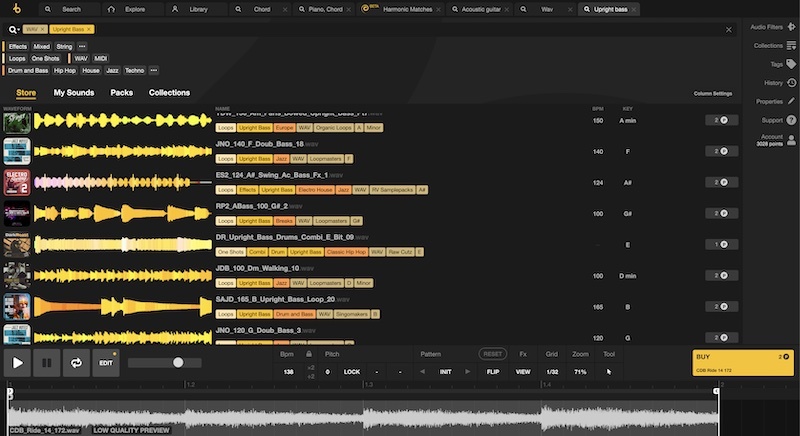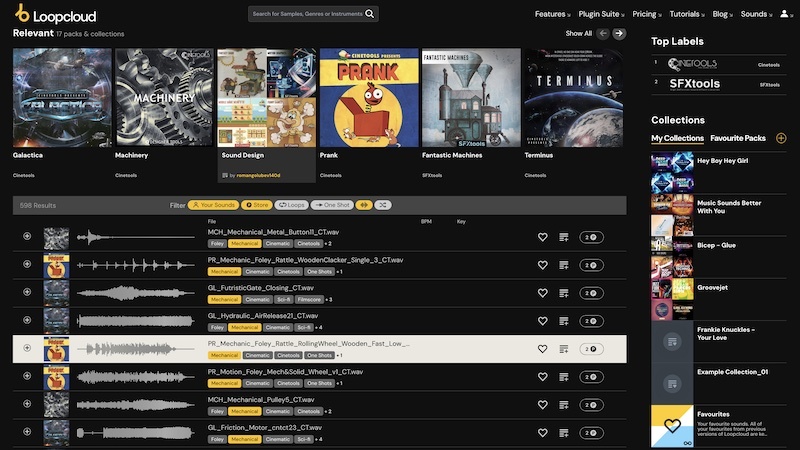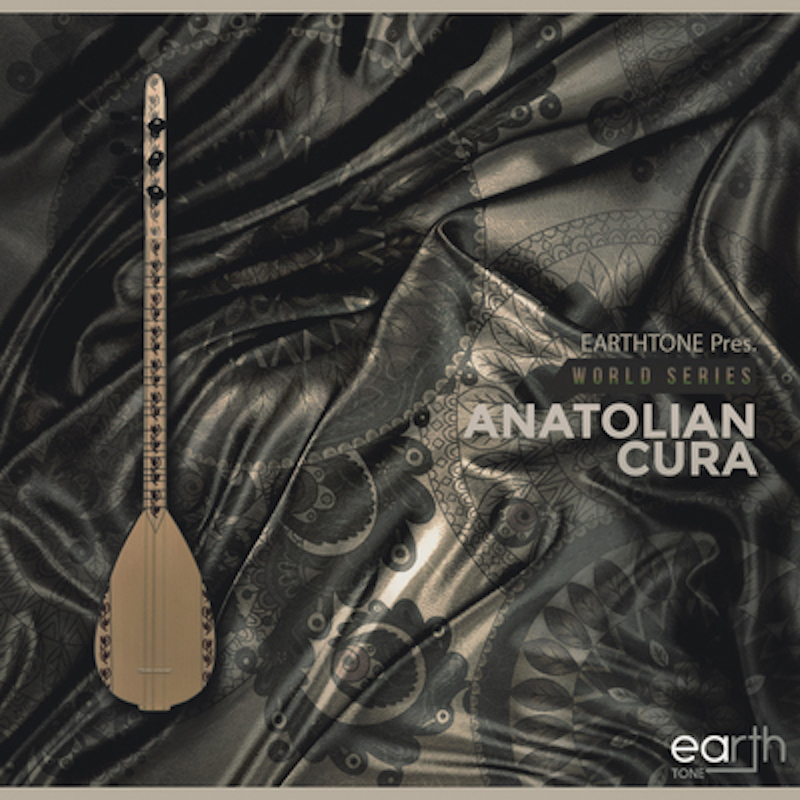Blog
Stuck in a Creative Rut? Try These Fresh Instruments on Loopcloud
4 Aug '2025
From the cura to the choir, learn about some inspiring ways for Loopcloud to keep you charged with new ideas that you might not have considered

Cover Photo: Pixabay
It’s a criticism you might hear from your parents or your high school teachers: electronic music can get repetitive. While that’s part of the charm for listeners, have you ever considered the same problem as experienced by the people who produce it? Start with a kick, add a bassline, lay down a progression that works… and so on. Every time.
Getting out of your comfort zone and doing things in a different way can be an ideal way to help you come up with something truly refreshing – for your listeners and for yourself. In this article, we’ll introduce you to some of the instruments that most producers reach for less, offering some explanation on what they are, as well as some advice on how you might use them.
While you’re here, check out our Instruments India pack in associated with Milap, and our article describing more inspiring instruments from that unique collection.
Upright Bass – for cool cats only
We start on at least somewhat familiar ground. You very likely know the character of the upright bass (AKA double bass or contrabass). While it stems from the orchestra, where it’s most often bowed, in jazz and swing, the upright bass is played with the fingers. It oozes coolness and noir sensibility, and is associated with the ‘walking bassline’.
In electronic music production, the upright bass can be a secret weapon for adding depth and groove, especially in downtempo, trip-hop, lo-fi house, or hybrid jazz-electronic tracks. Upright bass riffs or recording live plucks can introduce a raw, human feel that contrasts beautifully with synthetic textures. You can also resample and chop these loops for a more experimental touch. Run them through tape saturation, granular effects, or pitch modulation to create bass tones with a distinct personality.

Where to find it upright bass samples
You can find over 3500 upright bass one-shots and loops on Loopcloud – just select the Upright Bass tag by typing the phrase in or selecting it from the Tags panel.
Mechanical sounds
A range of synthesized and recorded sounds await in the Mechanical tag on sounds.loopcloud, found in the Effects category. These sci-fi sounds can bring a new spin to FX sounds, or even drum sounds. Try using the Loopcloud app’s Audio Filters to narrow this range down into shorter hits for drums, or longer clangs for FX and transitions.

Cura
The cura is a small, high-pitched string instrument used in Turkish and Anatolian folk music. Its sound is bright, sharp, and slightly nasal, with a fast decay and percussive quality that cuts through a mix. The cura’s timbre sits somewhere somewhat like a mandolin, but with more resonance, giving it a distinctly raw and expressive character.

In electronic music production, the cura can add a rich layer of texture and cultural depth, especially in genres that embrace acoustic-electronic fusion, like Organic House or Folktronica. Alternatively, chopping and re-pitching cura recordings can yield unexpected rhythmic or harmonic material, ideal for more experimental or ambient productions.
Where to find Cura samples to use in music production
There are over 500 cura samples available from Loopmasters via Loopcloud and sounds.loopcloud.com. They’re all royalty-free to use commercially in your tunes.
Thumb Piano (AKA Kalimba, Mbira)
The Kalimba and Mbira are different instruments, but can often be mislabelled. It’s a compact, melodic percussion instrument played by plucking metal tines with your thumbs. Depending on the specific type, it might have a clean, bright sound or a more complex, buzzy resonance. Either way, the thumb piano offers a distinctive timbre that’s warm, organic, and slightly hypnotic.
In electronic music production, the thumb piano shines as a source of rhythmic and melodic loops, particularly in genres like chillout, ambient, tropical house, and experimental beats. Its naturally repetitive, cyclical patterns lend themselves well to looping, layering, and minimalism. Try applying effects like delay or reverb, or even granulating it to create shimmering textures.
Where can I find thumb piano samples online?
One excellent choice for thumb piano samples would be Frontline Producer’s pack, The Sound of Mbira. This is also available as individual samples via a Loopcloud subscription, alongside other thumb piano loops and one-shots. You can find hundred of samples when you use the Thumb Piano or Kalimba tags on Loopcloud.

Swarmandal
This is a type of Indian harp, a trapezoidal instrument with often 30 to 40 strings, tuned to the notes of a specific raga and played by sweeping or plucking. Sonically, the swarmandal has a rich, crystalline tone with a bright attack and long, ringing sustain. Its sound is both delicate and lush, giving off a sense of spaciousness and mysticism.
In electronic music, the swarmandal can be a beautiful source of both melodic and textural material. Its harp-like glissandos and resonant overtones work wonderfully in ambient, downtempo, or meditative genres. Layer swarmandal sweeps under synth pads for a glowing, organic texture, or sample and time-stretch individual plucks to create glittering rhythmic loops.
Where to get royalty-free swarmandal samples
You can get over 250 swarmandel samples from Loopmasters via sounds.loopcloud.com or via the Loopcloud desktop app. These are all royalty-free when obtained through a Loopcloud trial or membership, as are all other Loopmasters packs and individual samples.
Vibraphone
The marimba might be everyone’s ringtone, but it’s the vibraphone that should always be in the music producer’s pocket. This metallic percussion instrument has aluminum bars that produce a smooth, mellow tone. What sets it apart is the use of motorized resonators with rotating disks that create a gentle vibrato effect, in a similar way to a rotary speaker effect.
The sound is soft, sustained, and glassy, with a shimmer that feels jazzy and dreamlike. It’s often associated with jazz, film scores, and lounge music.
In electronic music production, the vibraphone is perfect for adding atmosphere, elegance, and a touch of nostalgia. It works beautifully in genres like lo-fi hip-hop, ambient, downtempo, or deep house. Use it for melodic motifs, jazzy chord voicings, or textural layers under more synthetic elements.
Where to get vibraphone samples
You’ll find over 750 vibraphone one-shots and loops on the Loopcloud app, the Loopcloud Sounds plugin, or sounds.loopcloud.com – check out the Vibraphone category to get a load of the material that’s available.
String Ensemble
You know what this is, but it rarely makes the jump between orchestral score or film soundtrack and electronic music. The string ensemble, consisting of double bass, cello, violas and violins, is a hugely rich and evocative sound – but how can you use it in your tunes?
Thanks to the String Ensemble category on Loopcloud, you can browse over 1500 loops and one-shots to put in your tunes, and audition each in key and tempo with your DAW project through the Loopcloud plugin. These samples come in a range of tempos and keys, so they could find a use in some unexpected places.

Choir
OK, it might not be music’s most unusual instrument, but when’s the last time you heard a choir in any mainstream genre? But given that a choir is composed of vocals, which you do hear in the majority of mainstream tracks, we’re putting a pretty big bet on it that choir samples can work quite well if used tastefully in electronic music.
sampled choirs, synthesized vocal pads, or real vocal recordings, they can enrich ambient builds, elevate cinematic breakdowns, or provide haunting textures in darker genres like techno or experimental electronica. Try layering choir samples with synth pads to create evolving soundscapes, or chop and re-pitch them to craft vocal hooks and ghostly harmonies.
What’s more, any use of vocal-specific effects might be just as useful ‘en masse’ when used on choir sounds.
Check out the Choir Category on sounds.loopcloud to hear more of this instrument’s potential.
Get it all with Loopcloud
Start your Loopcloud subscription with a free trial and discover loops and one-shots from the mainstream and way beyond. There are four million samples available on Loopcloud and counting – and you can access them all as you like them: from within your DAW, from a superpowered separate app, or from your web browser.

